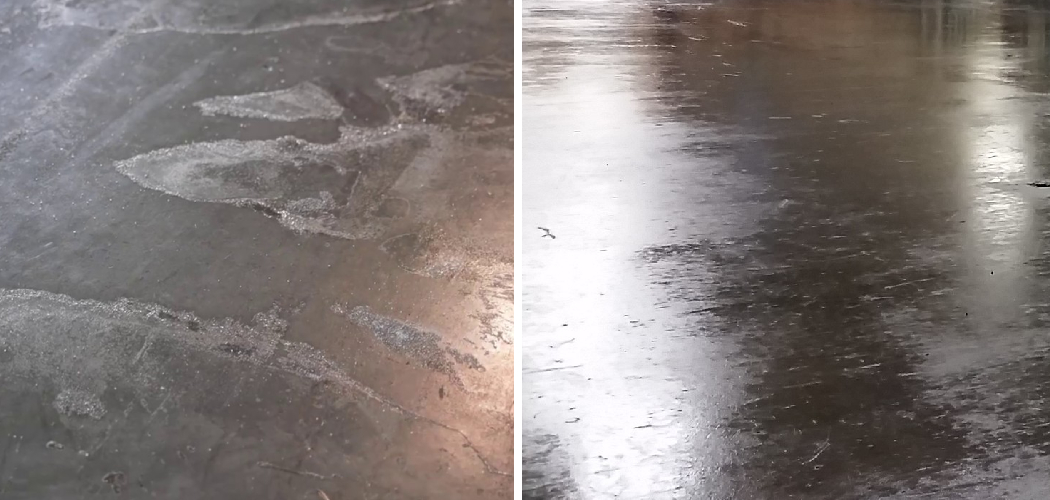Concrete floors are not only durable, but they also add to the aesthetic value of any home. However, sweating floors can be a headache, especially when it causes slipperiness, mold growth, and damage to flooring.
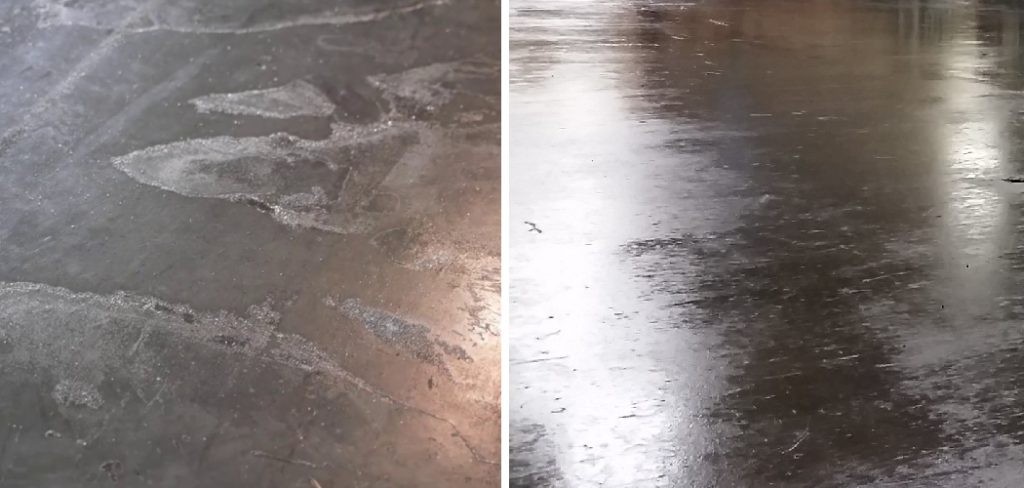
It is important to know that sweating occurs when the moisture in the air comes into contact with the cold surface of the concrete, causing it to condense. In this article, we will discuss effective ways how to stop concrete floor from sweating in your home.
Can You Stop the Concrete Floor from Sweating?
Have you ever walked into a basement or garage and felt damp on the concrete floor beneath your feet? This is not uncommon and can occur due to the process of condensation. During hot and humid weather, moisture can accumulate on the cooler surface of the concrete floor, creating a moist environment that can be uncomfortable and potentially damaging to your property.
However, you can take steps to prevent concrete floors from sweating, such as ensuring proper ventilation and insulation. By taking preventative measures, you can keep your concrete floors dry and free from moisture, creating a more comfortable and healthy environment for you and your loved ones.
Why Should You Stop the Concrete Floor from Sweating?
If you’ve ever walked on a concrete floor sweating, you’ll know how uncomfortable and hazardous it can be. Sweating concrete creates a slippery surface that can lead to accidents and makes the area more susceptible to mold and mildew growth. Additionally, it can damage any flooring or furniture it comes into contact with. It’s important to stop the concrete floor from sweating to avoid these issues.
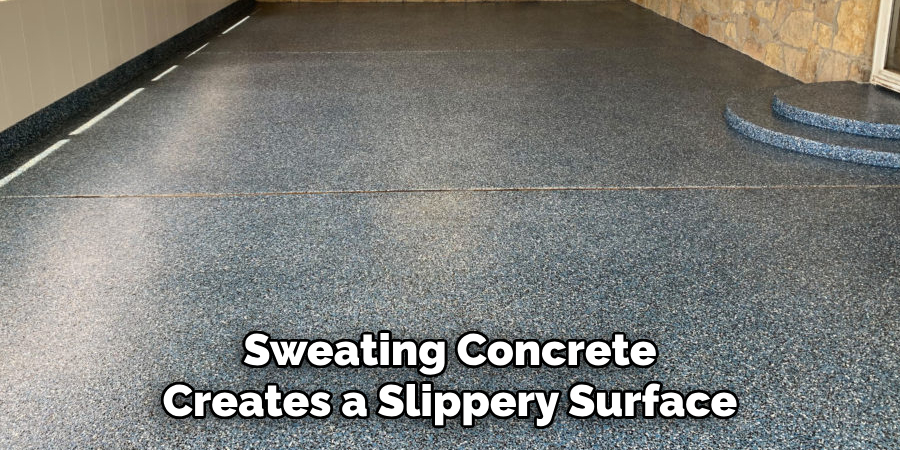
You can create a safer and more hygienic environment in your home or workplace by utilizing proven methods such as dehumidifiers, ventilation, or specialized coatings. Don’t let a sweaty floor ruin your day, take action now and enjoy a dry, clean floor that will last for years.
7 Ways to Follow on How to Stop Concrete Floor from Sweating in Your Home
1. Improve Ventilation
Sweating floors can be caused by the lack of ventilation in a room. This means that the moisture in the air has no way of escaping, causing it to accumulate on the cold surface of the floor. Installing an exhaust fan in the room can help improve ventilation and remove excess moisture. You can also consider leaving doors and windows open or using a dehumidifier. A dehumidifier will help remove the moisture in the air, reducing the amount of moisture that comes into contact with the concrete floor.
2. Insulate the Floor
Another effective way to stop concrete floors from sweating is by insulating them. This will help keep the temperature of the floor consistent, reducing the chances of condensation. You can use foam insulation boards or spray foam. Installing a vapor barrier, such as polyethylene sheeting, underneath the concrete floor can also be effective. This will provide a barrier between the floor and the moisture in the soil.
3. Use a Sealant
Sealing the concrete floor can also help prevent sweating. Choose a high-quality sealant that is specifically designed for concrete surfaces. The sealant will create a barrier on the floor’s surface, preventing moisture from penetrating it. It is important to clean the floor thoroughly before applying the sealant to ensure it sticks properly.
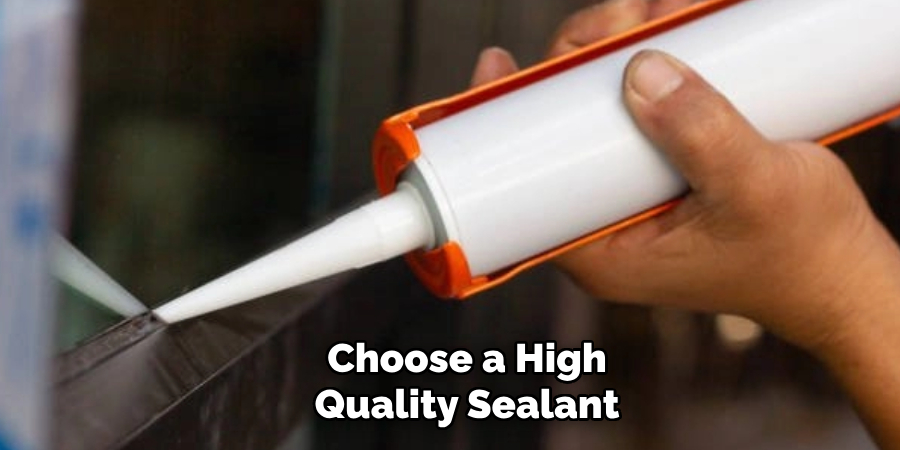
4. Install a Flooring System
If you are remodeling your home or building a new one, installing a flooring system can effectively prevent sweating floors. Systems such as radiant floor heating or air displacement systems can help regulate temperature and humidity, reducing the chances of condensation on concrete floors.
5. Use a Fan or Air Conditioner
Using a fan or air conditioner can also help reduce the air’s moisture, preventing sweating floors. Ensure that the temperature in the room is consistent, as extreme temperature changes can cause condensation. You can also consider using a hygrometer to measure the humidity level in the room and adjust the temperature accordingly.
6. Use a Heating System
If you have access to electricity, installing a heating system can help improve the floor’s temperature and reduce condensation. You could consider underfloor heating or electric baseboard heaters, depending on your budget. This will help keep the temperature consistent in the room, reducing sweating floors.
7. Paint the Floor
Applying a coat of paint on the concrete floor can also help prevent sweating. Choose an epoxy-based paint, as this will create a seal on the surface, protecting it from moisture. The paint should be applied in thin layers for maximum effectiveness. These steps should help you keep your concrete floor dry and moisture-free. However, if the problem persists and the floor continues to sweat, consider calling a professional for assistance.
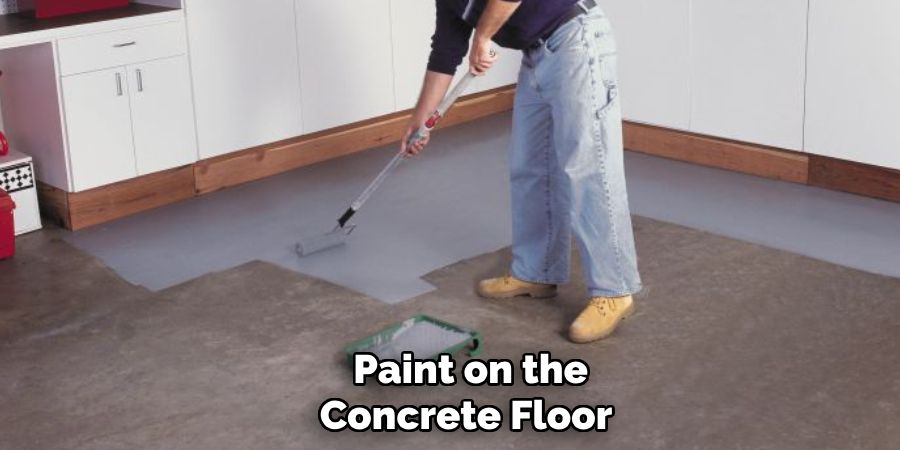
Following these steps, you can stop your concrete floor from sweating and keep it looking good for years. With a little effort and maintenance, you can easily eliminate condensation on the surface of your concrete floor. Ensure you take all necessary precautions when dealing with moisture and temperature levels in your home. This will help keep your floor looking as good as new for years.
5 Considerations Things When You Need to Stop Concrete Floor from Sweating
1. Check the Humidity Levels in Your Home
One of the first things you should do if you think your concrete floor is sweating is to check the humidity levels in your home. If the humidity levels are too high, it can cause condensation to form on your floor. You can purchase a hygrometer at most hardware stores to measure the humidity levels in your home.
2. Inspect Your Floor for Cracks or Damaged Areas
Another thing you should do is inspect your floor for any cracks or damaged areas. If there are any cracks or damaged areas, moisture can seep into them and cause the floor to sweat. You should repair any cracks or damaged areas as soon as possible.
3. Make Sure Your Floor Is Properly Sealed
If your floor is not properly sealed, moisture can easily penetrate it and cause sweating. You should have your floor professionally sealed every few years to ensure it is properly protected from moisture.
4. Use a Dehumidifier in Your Home
If the humidity levels in your home are too high, you may need to use a dehumidifier to reduce them. Dehumidifiers work by removing moisture from the air, which can help to reduce condensation on your floor.
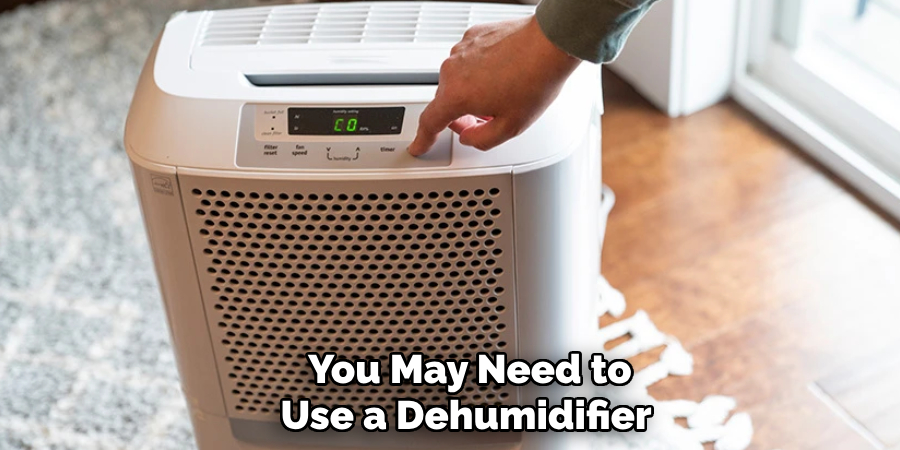
5. Contact a Professional if Nothing Else Works
If you have tried all the above tips and your floor is still sweating, you may need to contact a professional for help. A professional will be able to identify the root cause of the problem and recommend a solution.
5 Benefits of Stop Concrete Floors from Sweating
1. Reduces the Amount of Moisture in the Air
One of the primary benefits of stopping concrete floors from sweating is that it reduces the amount of moisture in the air. When concrete floors sweat, the water evaporates, increasing humidity levels. This can be particularly problematic in areas with high humidity levels, as it can create an environment conducive to mold and mildew growth.
2. Prevents Water Damage
Another benefit of stopping concrete floors from sweating is preventing water damage. When water seeps through cracks in concrete floors, it can cause the floor to deteriorate over time. Additionally, water can also damage other items in the home, such as carpeting and furniture.
3. Creates a More Comfortable Environment
Stopping concrete floors from sweating also creates a more comfortable environment. When concrete floors sweat, the moisture can make the air feel cooler than it is. This can be particularly uncomfortable when temperatures are already high in the summer.
4. Reduces Allergies and Asthma Symptoms
Another benefit of stopping concrete floors from sweating is reducing allergies and asthma symptoms. Dust mites, mold, and mildew thrive in humid environments, and exposure to these allergens can trigger asthma attacks and other respiratory problems.
5. Improves Indoor Air Quality
Finally, stopping concrete floors from sweating also improves indoor air quality. When concrete floors sweat, the moisture can evaporate into the air, taking harmful pollutants such as lead and mercury. These pollutants can harm human health, so reducing their presence in the air is important for creating a healthy indoor environment.
By taking the necessary steps to stop concrete floors from sweating, you can enjoy all the benefits that this brings. From reducing moisture in the air to improving indoor air quality, there are many reasons why it is important to keep your concrete floor dry and sweat-free. So take action today and make sure your floors stay healthy and dry!
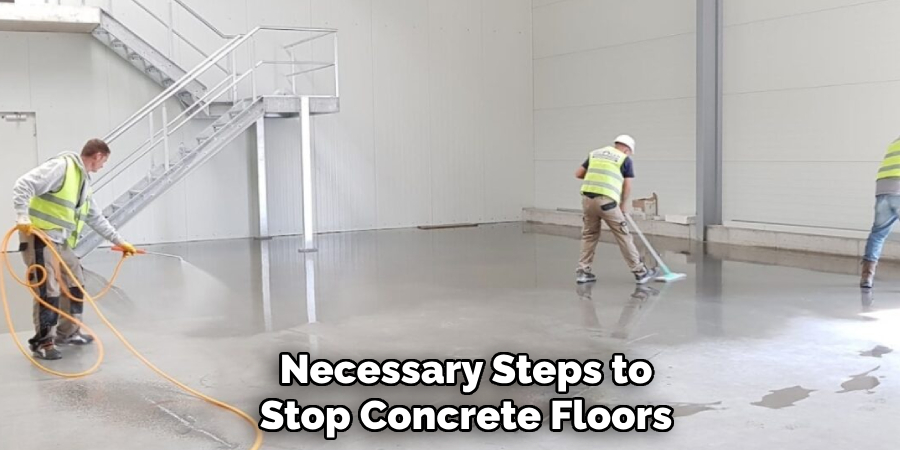
6 Common Mistakes People Make When Trying to Stop Concrete Floor from Sweating
1. Not Dehumidifying the Room
One of the most common mistakes people make when trying to stop a concrete floor from sweating is not dehumidifying the room. If the room is not dehumidified, the air will be full of moisture and will cause the concrete floor to sweat. The best way to dehumidify a room is to use a dehumidifier, which can be purchased at most home improvement stores.
2. Not Using a Vapor Barrier
Another common mistake people make when trying to stop concrete floors from sweating is not using a vapor barrier. A vapor barrier is a material that prevents moisture from passing through it. When used with a dehumidifier, a vapor barrier can help keep the concrete floor dry and prevent it from sweating.
3. Not Sealing the Concrete Floor
Another mistake people make when trying to stop the concrete floor from sweating is not sealing the concrete floor. Sealing the concrete floor will create a barrier preventing moisture from passing through it and causing the floor to sweat. Many different types of sealers are available, so be sure to choose one that is right for your specific needs.
4. Not Using Fans
Fans help to circulate air and can help to prevent the formation of condensation on the concrete floor. If you cannot access fans, you can open windows or doors to help circulate air and keep the concrete floor dry.
5. Not Cleaning the Floor Regularly
Dirt and dust can absorb moisture and cause the concrete floor to sweat. Be sure to sweep or vacuum the floor regularly to remove any dirt or dust that may be present.
6. Not Monitoring Humidity Levels
Finally, another mistake people make when trying to stop concrete floors from sweating is not monitoring humidity levels. Humidity levels should be kept at 60% or below to prevent condensation from forming on the concrete floor. You can monitor humidity levels using a hygrometer, which can be purchased at most home improvement stores.
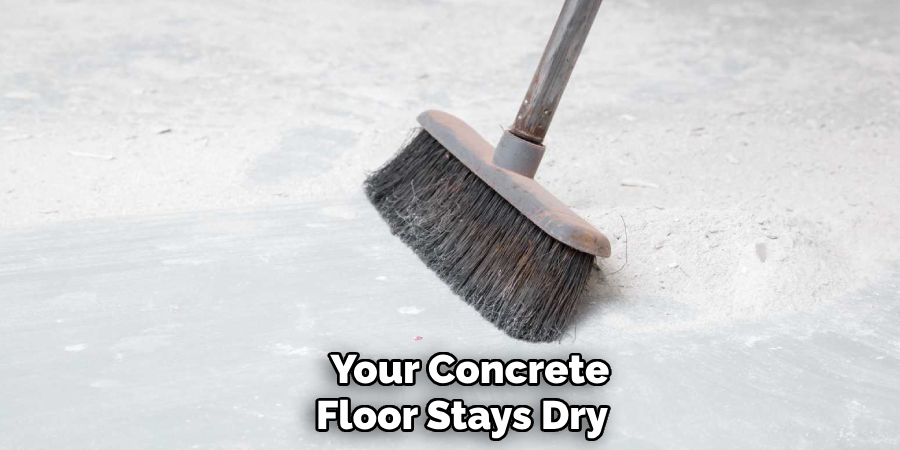
By avoiding these common mistakes, you can ensure your concrete floor stays dry and sweat-free. Taking time to care for your concrete floors properly will help them last longer and look better. So take action today and ensure your concrete floors stay in top condition!
Conclusion
Sweating floors can be a problem in any home, but with the right solutions, you can prevent it from happening. You can stop the concrete floor from sweating in your home by improving ventilation, insulating the floor, using a sealant, installing a flooring system, and using a fan or air conditioner.
Remember to choose the right solution for your home and ensure it is installed correctly to prevent further damage to your concrete floors. Thanks for reading our post about how to stop concrete floor from sweating.
